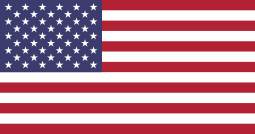Equine Winter Care Basics
Winter care routines can look very different depending on the climate in your region. Through domestication, we have made horses even more reliant on humans and winter care is no exception. Most owners’ immediate concern is warmth. Other important considerations include availability of water, shelter, windbreaks, blankets and diet. In areas with harsh winters, snow and ice add another layer of concern and preparation. Ensuring your horse enters winter with a healthy body condition score is the first step in avoiding winter struggles.
Water
Healthy horses will drink approximately 5-10 gallons of water a day. During winter, that number can nearly double because hay has 20% - 30% less water than grass pasture. The importance of having a free choice, clean water source available in winter is paramount in preventing colic and other health other issues. Since colder temperatures can cause water sources to freeze or ice over, various options are available to keep water thawed such as: a floating tank de-icer, heated buckets, and heated automatic waters. In instances where electric water heaters are not a viable option, ensure ice is broken and removed from the water source. Keep in mind excessively cold water can discourage horses from drinking as much as they should. Ideally water should be 45-65° F.
Shelter- Stall or Lean-to?Providing shelter is a necessity year-round. Regardless of other equine winter management decisions, all horses need shelter from cold winds, rain, and snow. Horses should not be turned out in extreme heat or cold without access to shelter for extended periods of time. Shelters can include trees, barns, stalls, lean-tos, and run-in sheds, just to mention a few. A horse’s natural long winter coat provides insulation by reducing the loss of body heat; however, insulation value is lost when a horse is wet or covered in mud. Horses kept outdoors should have access to lean-tos or run-in sheds positioned with openings away from the normal wind patterns. For horses housed in barns or stalls, it is important there is adequate ventilation and no direct drafts on the horses. Keeping your horse dry is crucial to keeping him warm and comfortable.
Blanketing- Yay or neigh?
Is blanketing necessary? Blanketing is not for all horses. It is necessary for warmth if no shelter is available, the horse’s winter coat has been clipped, the equine is very young or very old, is not acclimated to the cold, or has a body condition of three or less. If you choose to blanket your horse, it is important that the blanket fits properly and is inspected daily for damage and dryness.
Keep in mind not all blankets are the same. Blankets designed for turnout will be waterproof and made of durable, rugged fabric for colder temps. Turnout sheets (lightweight), are designed to provide protection from wet weather or mud during milder temperatures. Turnout blankets are available in various weights. The higher the number of grams the warmer and heavier the blanket. Lightweights typically have 100 grams of fill, mid-weight turnouts have 180-200 grams of fill, and heavy weight turnouts have 300-400 grams of fill.
Ice and Snow ManagementPrior to the onset of winter, owners should make repairs to shelters to prevent leaks, place feeding areas in good drainage locations and direct rainwater away from buildings and paddocks. These preventative measures in stable management are especially beneficial in areas prone to ice.
Like us, horses have difficulty with traction on ice and during winter weather. Barn lime, salt, wood ash, sand, soiled sawdust bedding, non-clump cat litter, poultry grit, and fine gravel and can be applied to slick surfaces to help with traction. Keep in mind that although these mediums are beneficial, accidental consumption should be prevented by feeding in elevated or enclosed feeders away from these products. Salt and ice melts are popular to treat roadways, sidewalks, and parking lots. If you select to use salt and ice melts in your equine facility, keep in mind it is less effective as temperature drops. Not all products are safe for use around pets and livestock, make sure to only use products that are safe for animals.
DietHorses need additional energy to maintain warmth when temperatures are low. Their calorie requirements increase in the winter. For every degree below the horse’s lower critical temperature (LCT), the horse requires an additional one percent energy in their diet. Forage is the best source of dietary energy and is preferred over grain, since it increases microbial fermentation and keeps the horse warmer. Providing forage 24/7 is important to help prevent colic and ulcers year round, but it becomes crucial in the winter when additional calories are required to keep warm.
It’s also very important to understand how much hay your horse needs and make sure you are providing it around the clock. The average horse needs 14-25lbs of hay a day. Your horse’s daily forage requirement is based on their weight: 1.5-3% of their body weight (depending on age, workload, production, climate etc). For example: 1000lb horse x 1.5% = 15lbs/day minimum. When forage alone is not enough for hard keepers or seniors, high fat supplements like, rice bran or edible oils can be fed.
Hay nets can be a good way to help reduce waste and keep forage in front of animals longer on harsh winter days. They can also help reduce the risk of colic, ulcers, and stress associated with rationing hay each day. See what net fits your feeding routine.
 Made In USA
Made In USA













